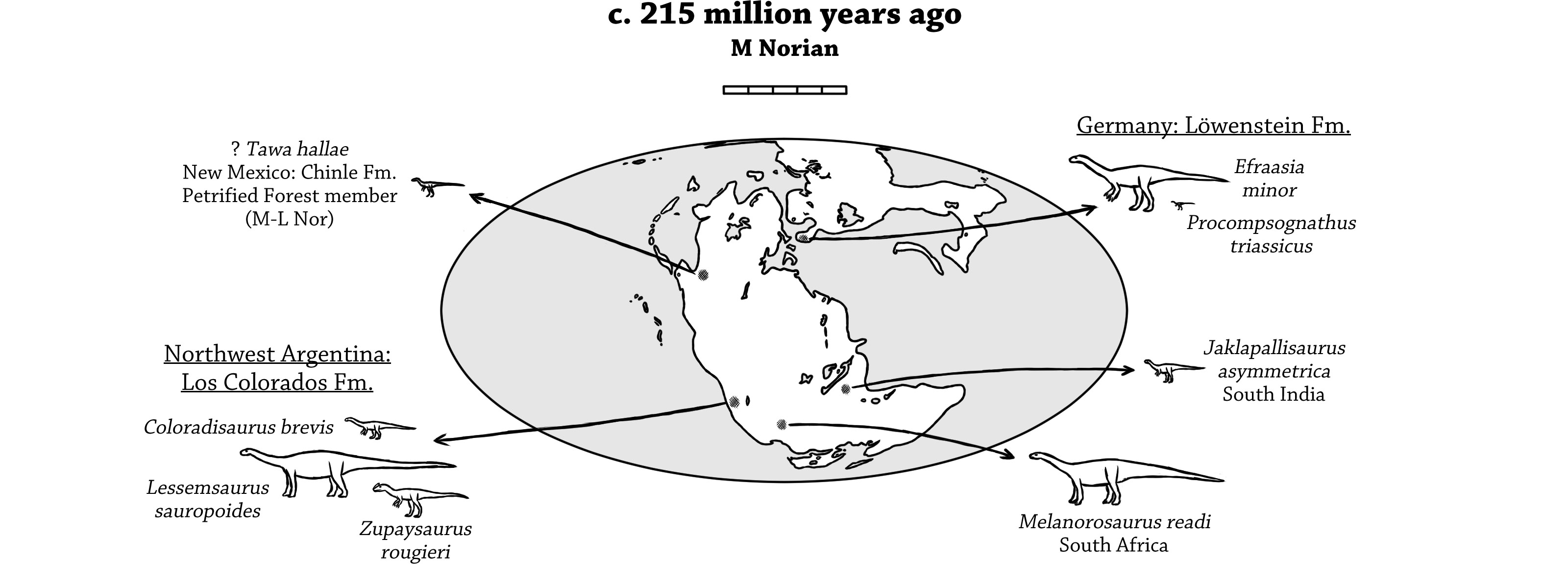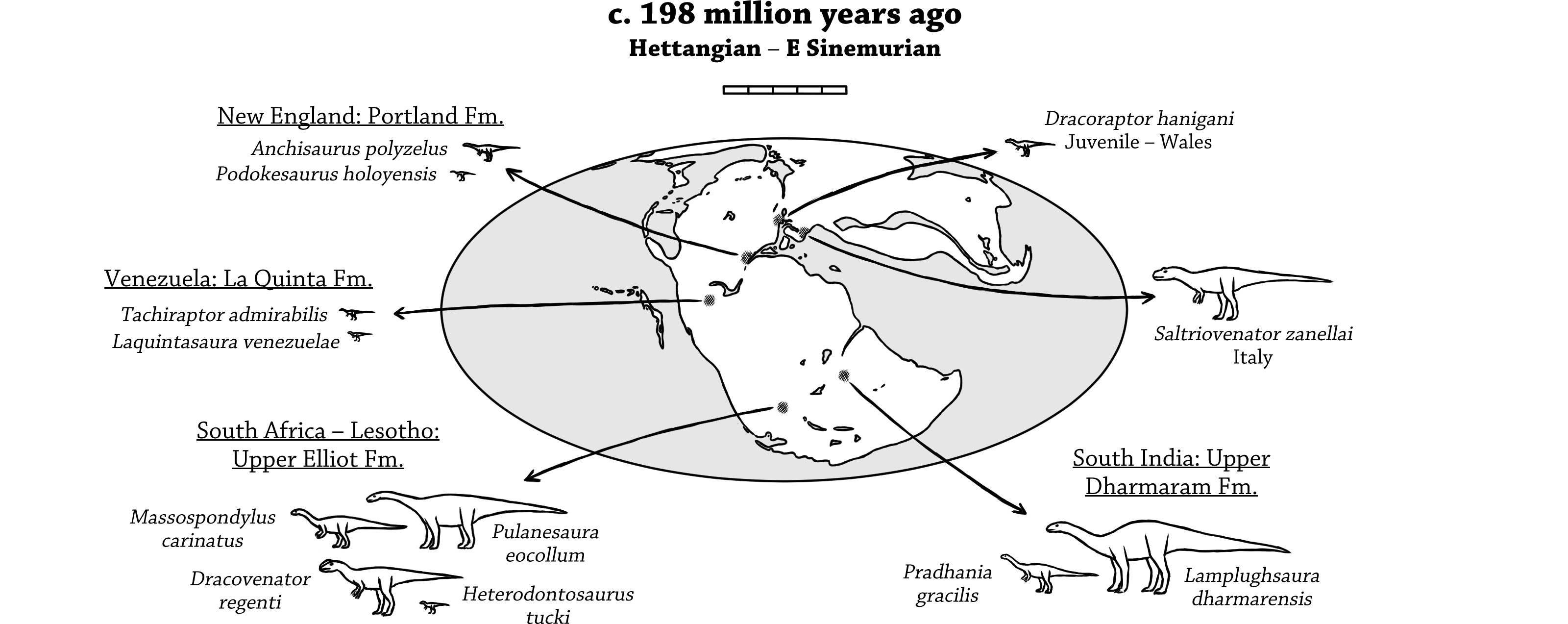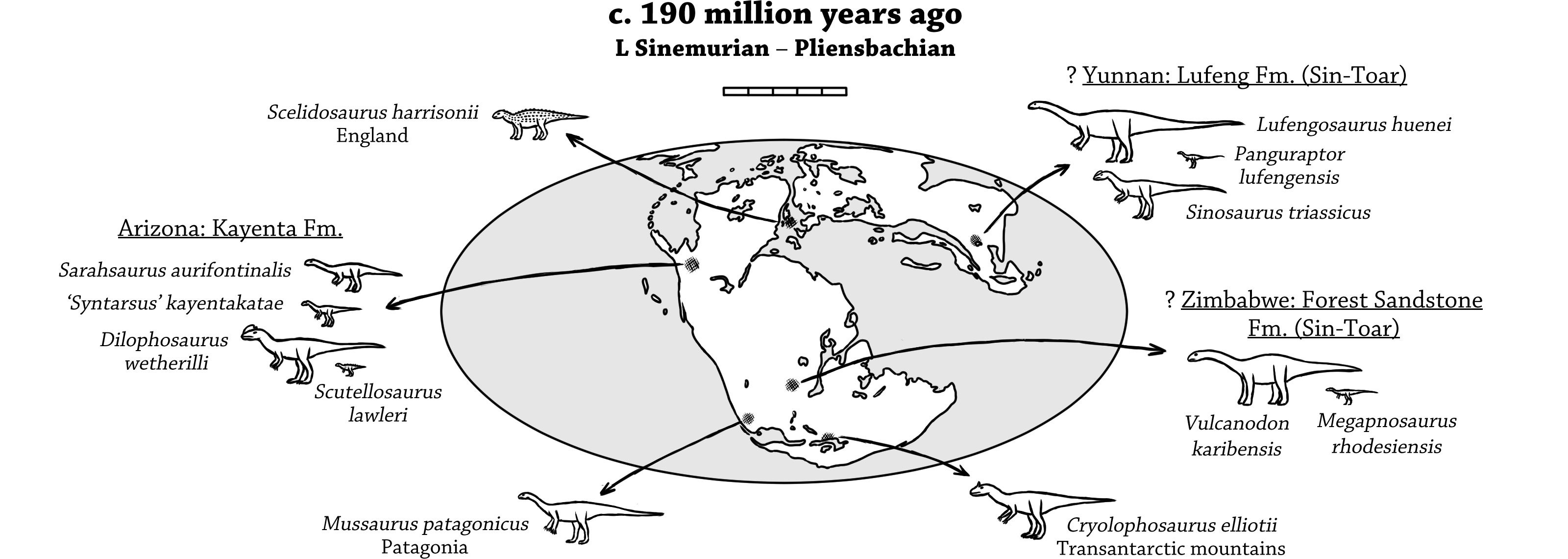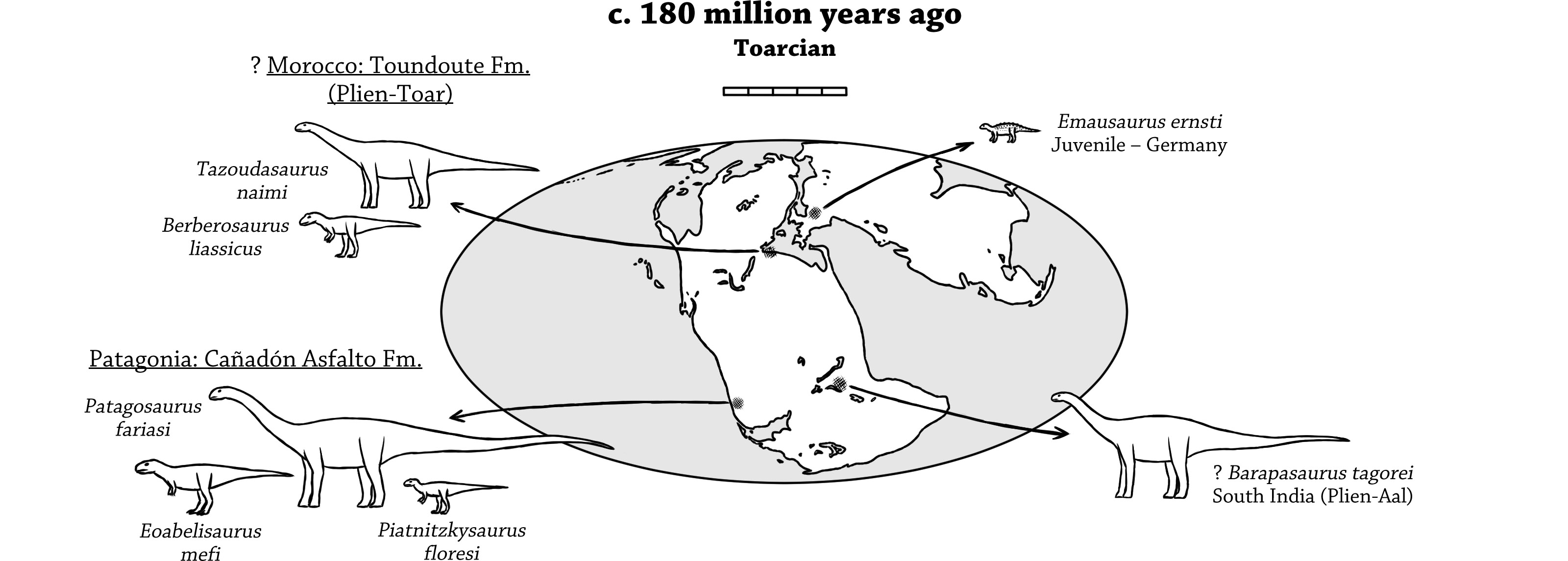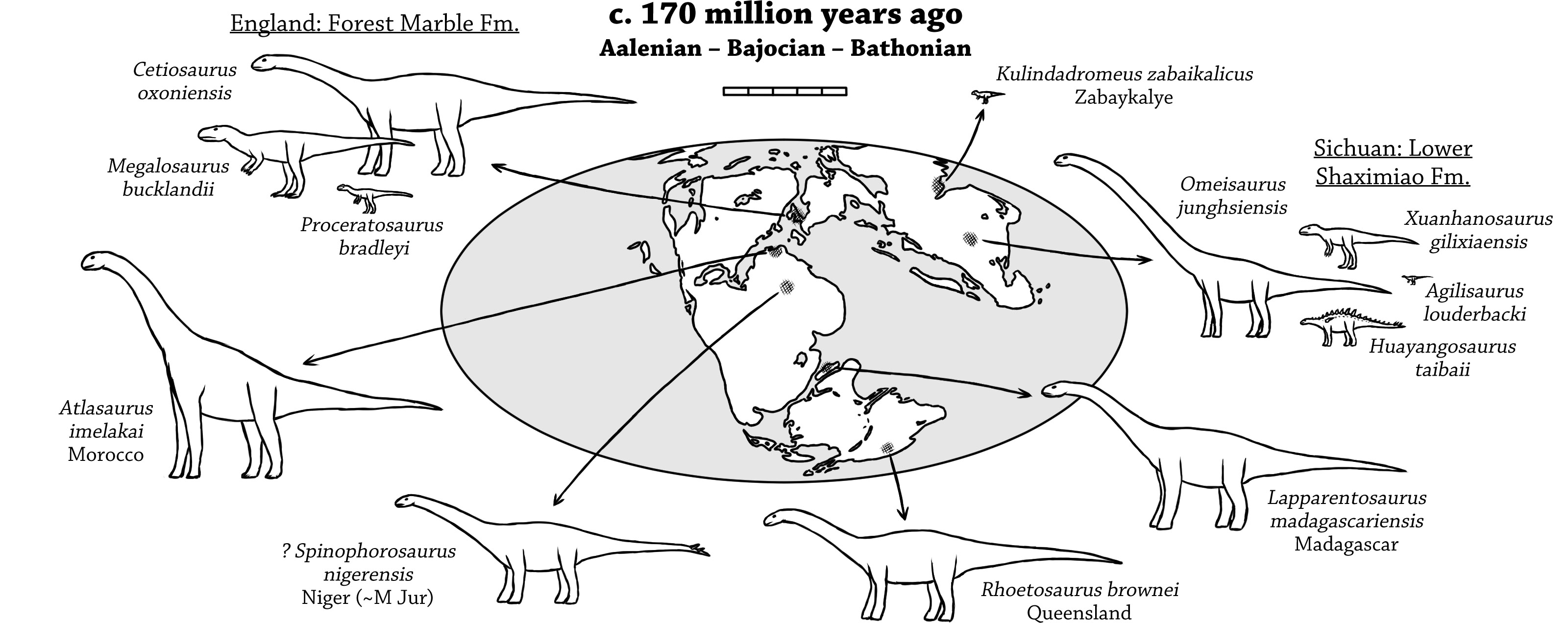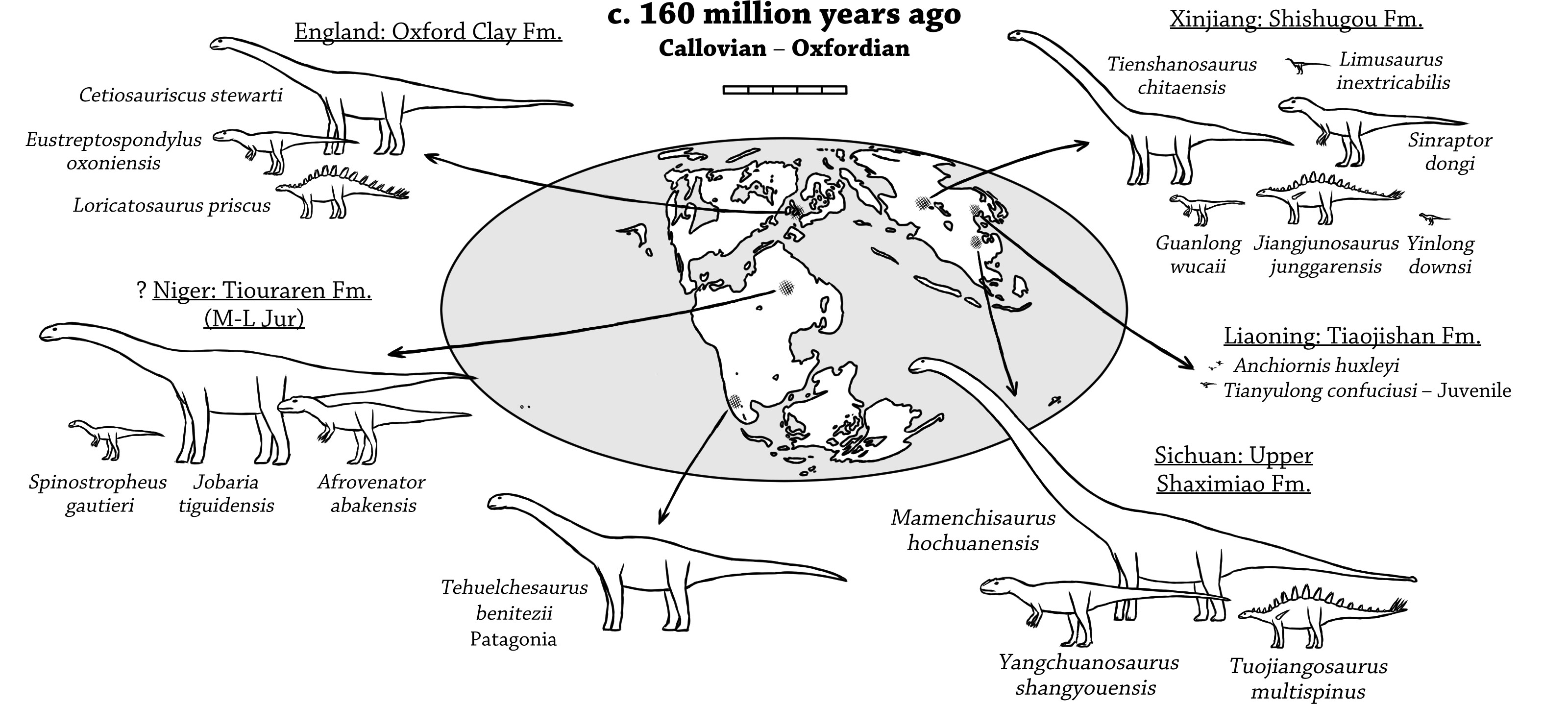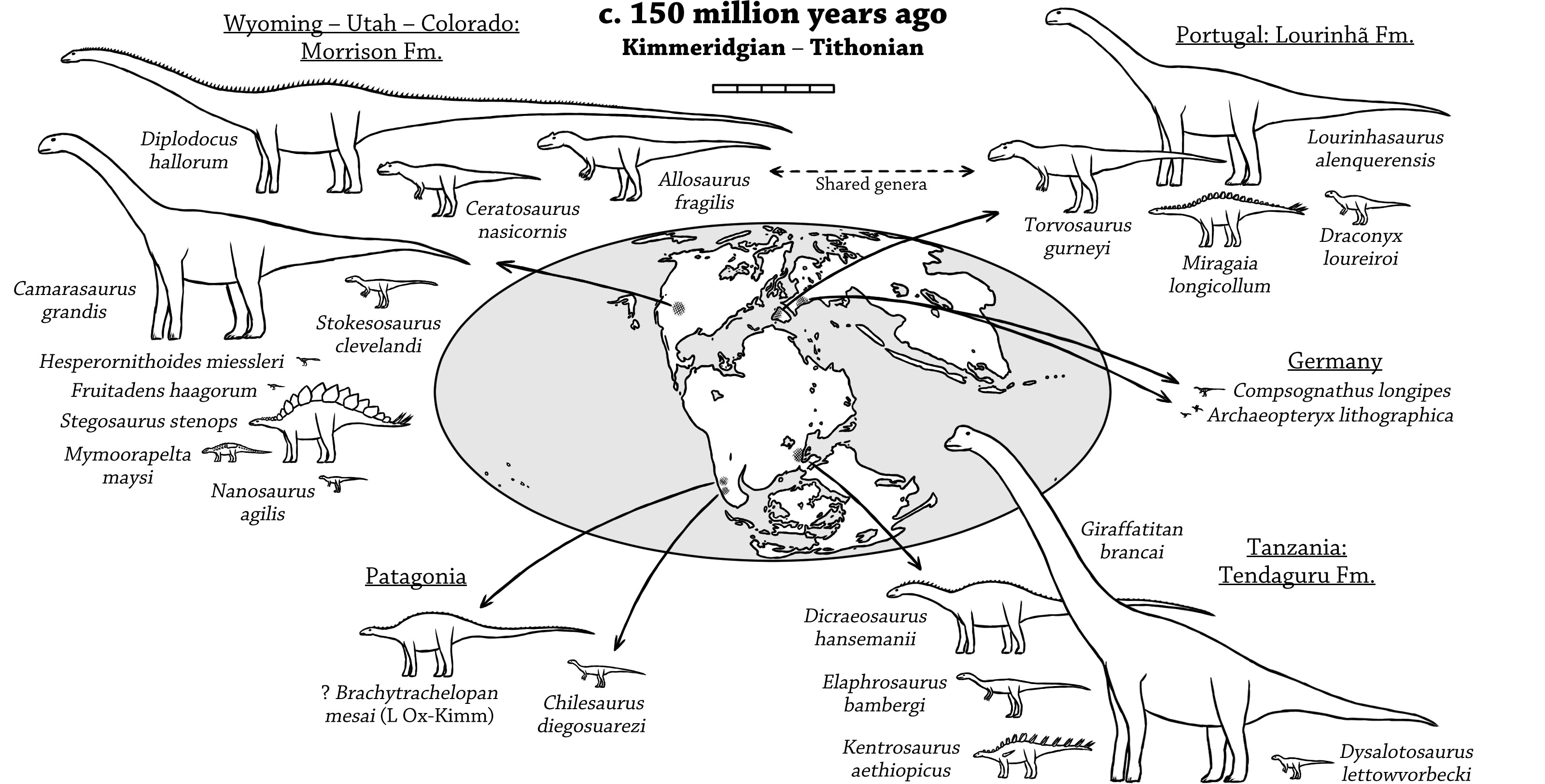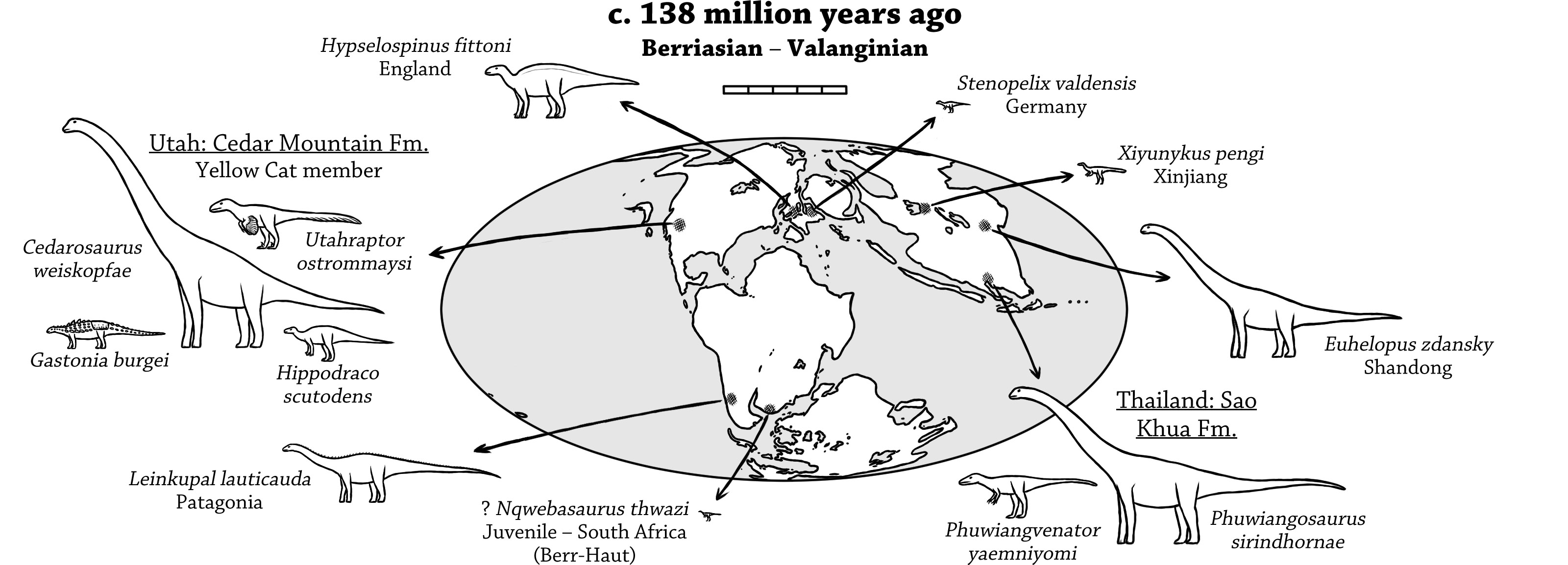These are a series of maps showing when and where different dinosaurs lived, as well as what sizes they were. I am not a palaeontologist or palaeoartist, as you can probably see, so the depictions may be more or less accurate. But I thought it was worth trying and hope it might still be useful in understanding their diversity and how they developed over time.
Each map covers about 10 million years, though the length varies to avoid uncertain edge cases. This is a tremendous amount of time – more than our entire hominin lineage has been around – but unfortunately hard to reliably divide further. But many individual formations will cover a narrower band of time, and when one portion covers most of its diversity I have tried to choose representatives from it, so as to be more likely to have actually lived together.
This is a work in progress. So far maps have been completed to the earliest Cretaceous, which should leave another seven to go. And of course this is still an active area of research, for which see the references below.
Josh Grosse – Contact


